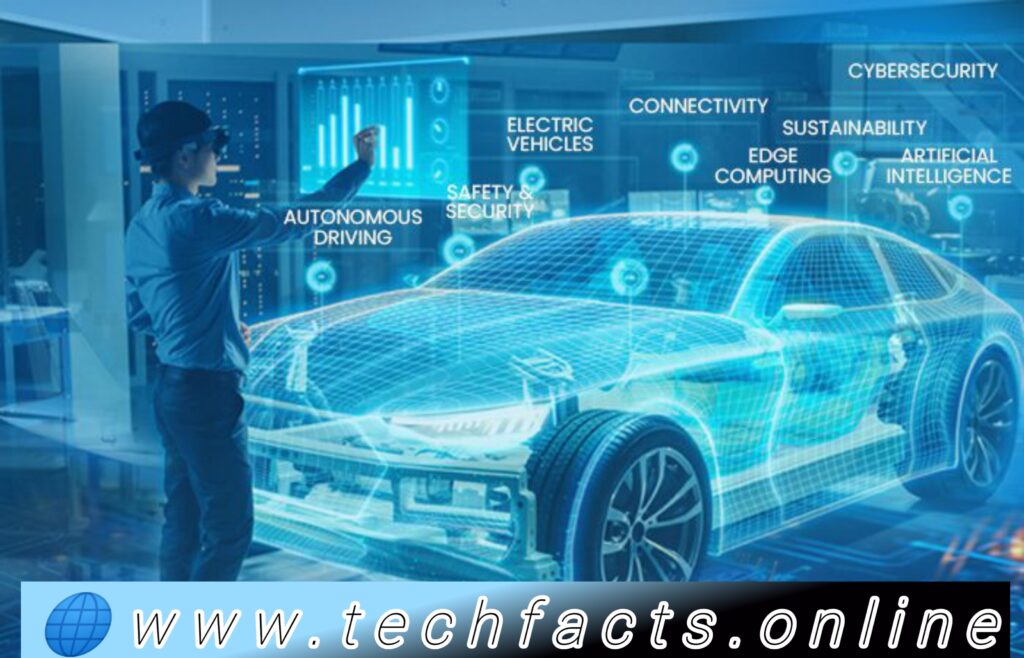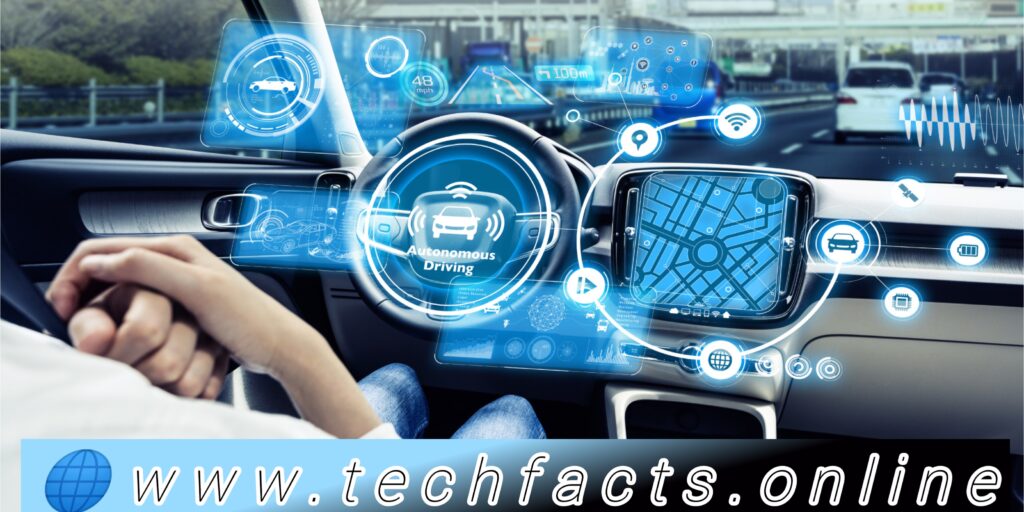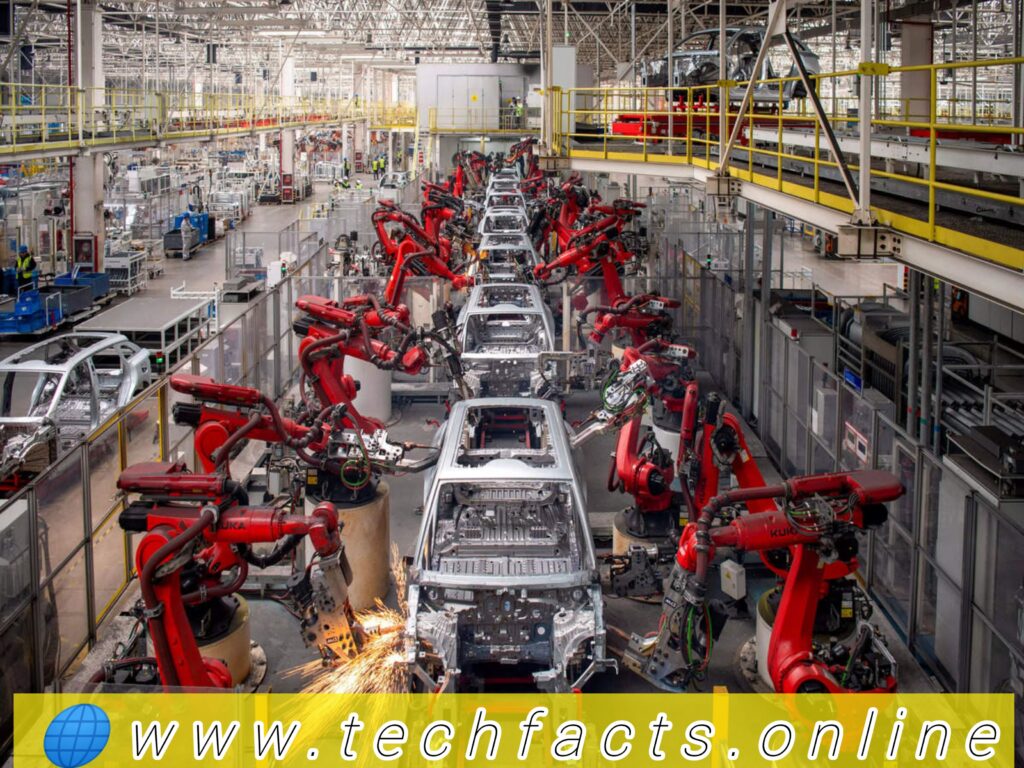Automotive Technology: A Comprehensive Overview
Automotive technology is a rapidly evolving field that encompasses the design, development, manufacturing, and maintenance of vehicles. This article delves into the intricacies of automotive technology, exploring its history, key components, emerging trends and future prospects.

Table of Contents
- Historical Context
- Key Components of Automotive Technology
- Powertrains
- Chassis and Suspension
- Braking Systems
- Safety Features
- Infotainment Systems
- Emerging Trends in Automotive Technology
- Table of Key Automotive Technologies
- Frequently Asked Questions (FAQs)
- Popular Questions Related to Automotive Technology
- Conclusion
Historical Context
The automotive industry has a rich history that dates back to the late 19th century. The invention of the gasoline engine marked the beginning of the modern automotive era. Here are some key milestones:
- 1886: Karl Benz patented the first gasoline-powered automobile, the Benz Patent Motorwagen.
- 1908: Ford introduced the Model T, revolutionizing mass production with the assembly line technique.
- 1970s: The oil crisis prompted advancements in fuel efficiency and emissions control technologies.
- 1990s: The introduction of the first electric vehicles and hybrid technologies began to shape the future of automotive design.
5 Powerful Ways Automotive Technology is Revolutionizing Transportation
Automotive technology is at the forefront of innovation, continuously evolving to meet the demands of safety, efficiency, and sustainability. As the industry embraces electric and autonomous technologies, the future of transportation promises exciting developments that will reshape our mobility landscape. Here are 5 powerful ways automotive technology is revolutionizing transportation:
1. Cleaner and Greener Mobility
The rise of electric vehicles is a game-changer in the fight against climate change and air pollution. EVs produce zero tailpipe emissions, contributing to cleaner air and a healthier environment. With advancements in battery technology and government incentives, the adoption of EVs is accelerating, paving the way for a more sustainable future.
2. Enhanced Safety and Accident Prevention
Modern vehicles are equipped with advanced safety features that prioritize occupant protection and accident prevention. From airbags and anti-lock braking systems to electronic stability control and advanced driver assistance systems, these technologies work together to enhance overall road safety. By monitoring the vehicle’s surroundings and assisting the driver in various tasks, ADAS can significantly reduce the risk of collisions.
3. Autonomous Driving: The Future of Transportation
Self-driving technology is at the forefront of automotive innovation, with companies investing heavily in research and development. Autonomous vehicles have the potential to transform urban planning, reduce traffic congestion, and enhance mobility for individuals unable to drive. By utilizing sensors, cameras, and machine learning algorithms, autonomous vehicles can navigate safely and efficiently, ushering in a new era of transportation.
4. Connected Vehicles: Smarter and More Efficient
The integration of the Internet of Things (IoT) in vehicles allows for enhanced communication and data exchange. Vehicle-to-vehicle (V2V) and vehicle-to-infrastructure (V2I) communication enable cars to share information about traffic conditions and hazards, improving overall efficiency and safety. Connected vehicles also offer remote diagnostics, allowing for proactive maintenance and reduced downtime.
5. Personalized and Seamless Infotainment
Modern vehicles are equipped with sophisticated infotainment systems that integrate navigation, connectivity, and entertainment features. From GPS-based navigation systems to hands-free calling and streaming services, these technologies enhance the driving experience and keep occupants connected on the go. The seamless integration of infotainment systems with personal devices further personalizes the in-car experience. As the automotive industry continues to evolve, these powerful trends in automotive technology are revolutionizing transportation. By prioritizing sustainability, safety, and innovation, the future of mobility promises to be cleaner, smarter, and more efficient than ever before.
Key Components of Automotive Technology
Automotive technology comprises various systems and components that work together to ensure vehicle performance, safety, and comfort. Below are the essential components:
Powertrains
The powertrain is the heart of any vehicle, responsible for generating power and delivering it to the wheels. It includes:
- Internal Combustion Engines (ICE): Traditional engines that operate on gasoline or diesel fuel. They convert fuel into mechanical energy through combustion.
- Electric Vehicles (EVs): Vehicles powered entirely by electric motors and batteries, offering zero emissions during operation.
- Hybrid Systems: These combine ICE and electric propulsion to improve fuel efficiency and reduce emissions. Examples include the Toyota Prius and Honda Insight.
Chassis and Suspension
The chassis is the framework that supports the vehicle’s body and houses critical components. The suspension system is crucial for vehicle handling and ride comfort, comprising:
- Springs: Absorb shocks from the road.
- Shock Absorbers: Control the impact of road irregularities.
- Anti-roll Bars: Reduce body roll during cornering.
Braking Systems
Modern vehicles utilize advanced braking technologies to enhance safety and control. Key components include:
- Anti-lock Braking Systems (ABS): Prevent wheel lock-up during hard braking, allowing the driver to maintain steering control.
- Electronic Stability Control (ESC): Helps prevent skidding and loss of traction by selectively applying brakes to individual wheels.
Safety Features
Safety is a paramount concern in automotive design. Key safety features include:
- Airbags: Deploy during collisions to cushion and protect occupants.
- Advanced Driver Assistance Systems (ADAS): These systems include features such as:
- Lane Departure Warning: Alerts drivers when they unintentionally drift out of their lane.
- Adaptive Cruise Control: Automatically adjusts the vehicle’s speed to maintain a safe following distance.
- Automatic Emergency Braking: Engages the brakes if a potential collision is detected.
Infotainment Systems
Modern vehicles are equipped with sophisticated infotainment systems that integrate various features, including:
- Navigation: GPS-based systems that provide real-time directions and traffic updates.
- Connectivity: Bluetooth and Wi-Fi capabilities for hands-free calling and internet access.
- Entertainment: Streaming services, radio, and media playback options.
Emerging Trends in Automotive Technology
The automotive industry is witnessing transformative trends that are reshaping the future of transportation. Key trends include:
Electric Vehicles (EVs)
The shift towards electric vehicles is gaining momentum due to:
- Environmental Concerns: Growing awareness of climate change and air pollution is driving demand for cleaner alternatives.
- Technological Advancements: Improvements in battery technology have extended the range and reduced charging times for EVs.
- Government Incentives: Many governments are offering tax credits and subsidies to encourage EV adoption.
Autonomous Vehicles
Self-driving technology is at the forefront of automotive innovation, with companies like Tesla, Waymo, and traditional automakers investing heavily in research and development. Key aspects include:
- Sensors and Cameras: Used for environment perception, allowing vehicles to navigate safely.
- Machine Learning: Algorithms that enable vehicles to learn from data and improve their driving capabilities over time.
- Regulatory Challenges: The deployment of autonomous vehicles faces legal and ethical considerations that must be addressed.
Connected Vehicles
The integration of the Internet of Things (IoT) in vehicles allows for enhanced communication and data exchange. Benefits include:
- Vehicle-to-Vehicle (V2V) Communication: Enables cars to share information about traffic conditions and hazards.
- Vehicle-to-Infrastructure (V2I) Communication: Allows vehicles to interact with traffic signals and road signs for improved traffic management.
- Remote Diagnostics: Enables real-time monitoring of vehicle health and performance, facilitating proactive maintenance.
Sustainable Practices
The automotive industry is increasingly focusing on sustainability through:
- Recyclable Materials: Utilizing materials that can be reused or recycled to reduce waste.
- Energy-efficient Manufacturing: Implementing processes that minimize energy consumption and emissions during production.
- Alternative Fuels: Exploring options such as hydrogen fuel cells and biofuels to diversify energy sources.
Table of Key Automotive Technologies
| Technology Type | Description | Example Applications |
|---|---|---|
| Internal Combustion Engine | Traditional engine type using gasoline or diesel | Most conventional vehicles |
| Electric Vehicle | Powered by electric motors and batteries | Tesla Model S, Nissan Leaf |
| Hybrid Systems | Combines ICE and electric power | Toyota Prius, Ford Escape Hybrid |
| Advanced Driver Assistance Systems | Technologies that assist drivers in vehicle control | Lane-keeping assist, adaptive cruise control |
| Autonomous Vehicles | Self-driving technology that requires minimal human intervention | Waymo, Tesla Autopilot |
| Infotainment Systems | Integrated systems for navigation, connectivity, and entertainment | Apple CarPlay, Android Auto |
Frequently Asked Questions (FAQs)
1. What is automotive technology?
Automotive technology refers to the study and application of various technologies in the design, development, and maintenance of vehicles. It includes aspects such as powertrains, safety systems, and infotainment.
2. How has automotive technology evolved?
Automotive technology has evolved from basic mechanical systems to complex electronic and software-driven systems, including electric and autonomous vehicles. Innovations in materials and manufacturing processes have also contributed to this evolution.
3. What are the benefits of electric vehicles?
Electric vehicles offer several benefits, including:
- Reduced Emissions: EVs produce zero tailpipe emissions, contributing to cleaner air.
- Lower Operating Costs: EVs typically have lower fuel and maintenance costs compared to traditional vehicles.
- Energy Independence: Reducing reliance on fossil fuels enhances energy security.
4. What is the role of autonomous vehicles in the future of transportation?
Autonomous vehicles aim to improve road safety, reduce traffic congestion, and enhance mobility for individuals unable to drive. They have the potential to transform urban planning and reduce the need for parking spaces.
5. How do advanced driver assistance systems work?
ADAS uses sensors, cameras, and radar to monitor the vehicle’s surroundings and assist the driver in various tasks, such as maintaining lane position, adapting speed, and avoiding collisions. These systems enhance overall safety and driving comfort.

Popular Questions Related to Automotive Technology
1. What are the latest trends in automotive technology?
The latest trends include the rise of electric vehicles, advancements in autonomous driving technology, and the integration of connected vehicle systems that enhance safety and convenience.
2. How do electric vehicles compare to traditional vehicles?
Electric vehicles typically have lower operating costs, reduced emissions, and require less maintenance compared to traditional internal combustion engine vehicles. However, they may have limited range and require charging infrastructure.
3. What are the safety features in modern vehicles?
Modern vehicles are equipped with numerous safety features, including:
- Airbags: For occupant protection during collisions.
- ABS and ESC: To enhance braking performance and stability.
- ADAS: For additional driver assistance and accident prevention.
4. What impact does automotive technology have on the environment?
Advancements in automotive technology, particularly in electric and hybrid vehicles, aim to reduce greenhouse gas emissions and promote sustainable transportation. The industry is also exploring alternative fuels and energy-efficient manufacturing practices.
5. How is technology changing vehicle maintenance?
Technology has improved vehicle diagnostics and maintenance through onboard computers that provide real-time data and alerts for necessary repairs. Predictive maintenance systems can also anticipate issues before they become serious problems.
Conclusion
Automotive technology is at the forefront of innovation, continuously evolving to meet the demands of safety, efficiency, and sustainability. As the industry embraces electric and autonomous technologies, the future of transportation promises exciting developments that will reshape our mobility landscape. The integration of advanced systems and sustainable practices will play a critical role in the ongoing transformation of the automotive sector, paving the way for a cleaner, safer, and more connected world.



